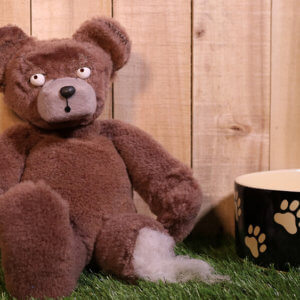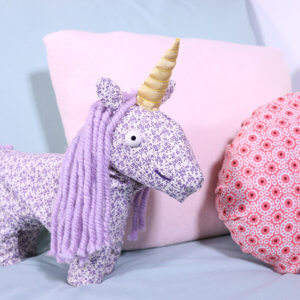Toyhood – A Non-Political Short Film that Tackles Brexit & Immigration
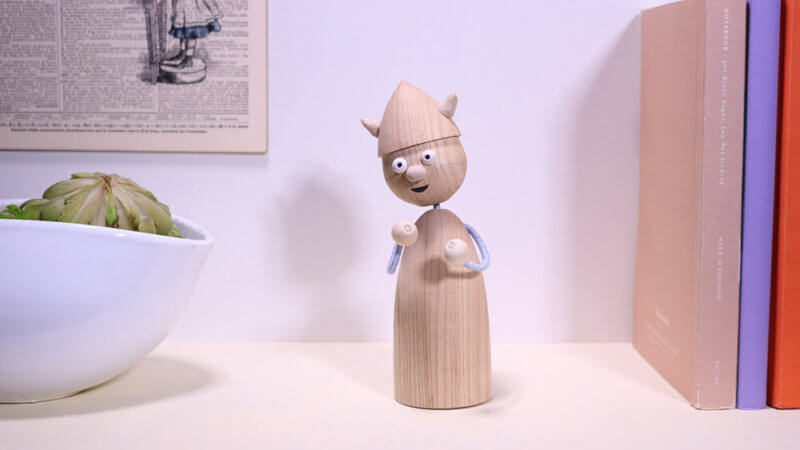
Animated shorts on the subject of Brexit and immigration have become a popular theme on the festival circuit over the past few years; with many examining people’s anger and sadness at the issue. Enter stop-motion animator Zoë Hutber, who wanted to produce a film with no political agenda, and one that never says the word Brexit once. Rather, she wanted to bring humour and a child-like innocence to the discussion, and explore fun, lighthearted topics we can all relate to.
Toyhood – a mockumentary about toys and the children they ‘work’ with – combines stop-motion, toy-like puppets with unscripted interviews from internationals living in Britain today.
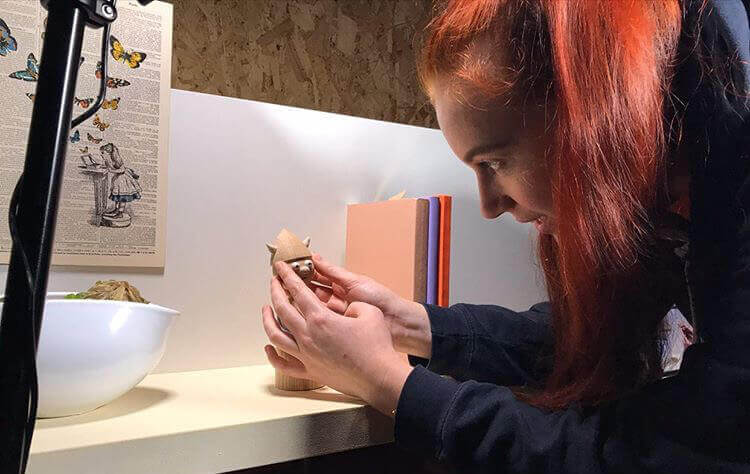
Zoë, a BAFTA-nominated stop-motion animator who received international acclaim with her film Short Changed, had the initial idea for Toyhood when she saw that Creative Industries Trafford and Cosgrove Hall Archives were commissioning films from emerging animators that had some link to the Cosgrove Hall puppets’ ‘old-school’ aesthetic. Being aware that film-making is typically a wasteful industry, Zoë was keen to make a film that used predominantly recycled and sustainably sourced materials. Plus, as this was a collaboration with the Cosgrove Hall Archives, whose puppets were mainly made of wood or fabric, she wanted to re-create this aesthetic as closely as possible.
Following a successful funding bid to Creative Industries Trafford, Zoë took her film to the Animarkt Stop Motion Forum in Łódź, Poland, where she pitched it to leading members of the stop-motion industry, including producers, puppet makers, animators and distributors. This is where we first met; and it piqued my interest with its treatment of the subject and visual style. After 6 months of production, the film has just been released online (available in full below), and I caught up with Zoë to find out more about the making of the film.
Where did the idea for this project come from?
Honestly? In a pub. I was having a pint with my friend Eirik shortly after I’d seen the brief from Creative Industries Trafford, and he was telling me all these little stories about Norway, where he’s from. It made me realise how little I knew about a country so close, and a place so important in my friend and colleague’s life. I got the feeling that it would be great for people to hear others like Erik telling his stories, and wouldn’t it be fun if he was a tiny wooden viking toy at the time. This developed into a whole range of tiny toys telling stories about their international childhoods and it seemed like a really wholesome and uniting concept in the wake of all the talk of reducing immigration. Eirik is the voice of the tiny viking in the final film.
The original idea was just to create this unity between the toys and the audience, which is actually, and kind of secretly, unity between immigrants and the audience. The beauty of animation, which it has been used for countless times, is to be a vehicle for a voice of someone without ever showing their face. This strips away a layer of potential prejudice or assumptions and just lets you concentrate on the words that are being said, not who’s actually saying them.
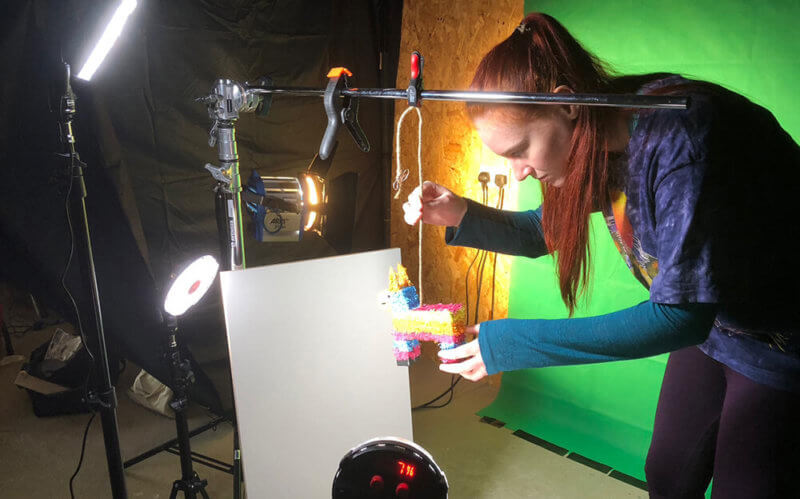
What was it like to collaborate with Cosgrove Hall Archives? How did you work with them? Can you tell us about how you sourced your materials/toys/etc?
They were really great to work with. They’re really driven by helping emerging animators with their careers and they made it very clear that they’d like to keep supporting all of us after the films were finished. They also gave us loads of creative freedom with the film, which I gather can be quite rare with a lot of film funds. This being my first independent film it was amazing having the flexibility to just be able to muddle through, figure it out as I went and not have strict criteria to meet.
They’re based in Manchester so we mostly communicated remotely but back in November my small team and I road-tripped up there for a tour of the archives. Their wonderful archivist, Rosy, showed us into a room full of puppets from Wind in the Willows, Noddy in Toyland, Animal Shelf, Bill and Ben and Postman Pat. We were star struck. I think my personal highlight was getting to squeeze Stripey the Zebra, my favourite character from Animal Shelf. Whilst wearing gloves and heavily supervised by Rosy, just to be clear.
In asking Rosy far too many impossibly detailed questions about the intricacies of how the 40+ year old puppets were made, it became clear to us that our best option was to make all our puppets from scratch, rather than finding existing toys and shoving skeletons into them to make them animatable. One thing I love about stop-motion is its ability to use real materials and objects which have a history of their own, which can add extra story and meaning to the film. Not being able to use real toys, potentially even ones belonging to the people I interviewed for the film, was a shame but Rosy gave us the perfect alternative when she revealed boxes of archived fabric that was collected for puppet making back in the day and never got used. We spent the next hour rifling through potential teddy fur and parrot skin and Rosy was really happy for us to take some home for our Toyhood puppets. Apart from this saving us budget on fabric, it brought back the idea of imbuing meaning and history into the very skin our puppets and a genuine, tangible link to the Cosgrove Hall Archives.
I’m so glad we were able to source materials in this way, I’m really into sustainability both inside and outside of animation, so that’s something I wanted to be really conscious of in the production of Toyhood. I’m aware that a lot of film-making, especially fabrication, can generate a lot of waste and use a lot of harmful substances, a lot of which are toxic and even carcinogenic. I just really want to minimise any potential harm to both the crew and the environment wherever I can, with the distant (and already scripted) idea of making a stop-motion film which is completely zero-waste. Sustainable film-making methods paired so well with the traditional Cosgrove Hall aesthetic of wooden and fabric toys, it was a perfect opportunity.
We met at the Animarkt forum last year, where I discovered your project during the pitching session. Where did you hear about Animarkt and how did the experience benefit and shape your project going forward?
I think I can safely say that without Animarkt, Toyhood would be very different and certainly not as good. I didn’t know much about Animarkt before I went, but it was more holistic help than I could ever have expected. As well as being selected to pitch, I got into Juan Soto’s Character Animation workshop which honestly changed my life. Learning industry methods from Juan was incredibly enlightening, I had never used Live Action Videos (LAVs as they’re called in the industry) to this extent before but Juan is a big fan, as are Aardman and Laika. Its essentially filming yourself act out exactly what the character is doing and watching it a thousand times to pick out the tiniest movements and I think its actually what made Toyhood. I really dislike acting myself but I used it countless times throughout animating the film, the footage of which I swear will never be seen by anyone else’s eyes.
The direction of the film also underwent some pretty drastic changes in talking with script editor Ana Bielak, Animarkt’s script consultant. I had collected some interviews before I went to Animarkt and had edited them together, but they were quite disjointed and there wasn’t much of an emotional arch. Ana helped me realise I really needed to hone in on the toys’ relationships with children and pets, to create this hypothetical sense of nostalgia for how the toys would feel without the children in their lives. This was the perfect metaphor for Brexit, making people miss something that hasn’t gone yet, which is the shape the film takes now.
Alongside the workshop and consultations, just being surrounded by so many stop-motion professionals was a rare and special occurrence. It’s rare enough just to find yourself in a room with someone else in animation let alone specifically stop-motion. I met so many talented and like-minded people, some of whom helped with Toyhood even after Animarkt had finished and some whom I’m sure I’ll work with on future projects.
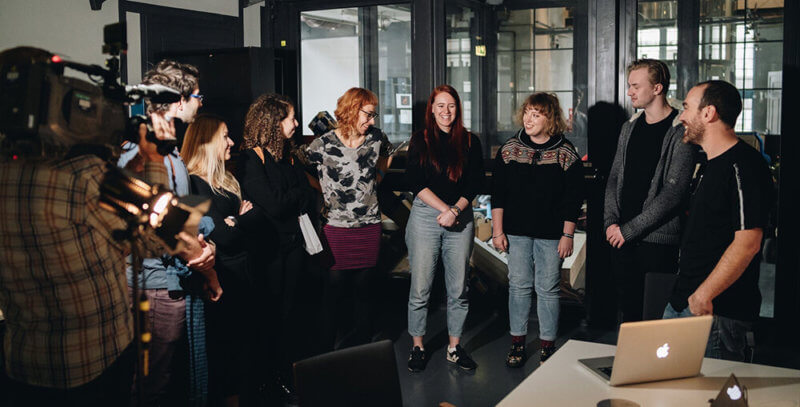
Zoë at Animarkt Stop Motion Forum (forth from right)
You mentioned in your pitch that the Brexit issue and how UK citizens view our neighbours was a driving idea for the film. Did you set out to make a political film with a message, or just to have fun with the archive materials requirement?
I really like films that say something, especially if they can say it without ever actually saying it, you know? As you mentioned, there are a lot of angry films about Brexit full of hate, and I just wanted to make one that was lighthearted, fun and full of love. I wanted people to be able to watch it without ever knowing it had links to Brexit, and enjoy it as a lighthearted film, but also, if I could get even one person who would class themselves as anti-immigration to listen to, engage with or laugh along with the immigrants voicing the film that would be job done.
As for working with the archive materials, I do enjoy having an aesthetic or initial brief to work off, sometimes limitations are helpful, and I added the extra limitation of working sustainably, as you know. It was also really interesting to work with the archives and with Rosy. I’d never really thought about what happens to the puppets after the film is done but now I know she will take good care of them.


